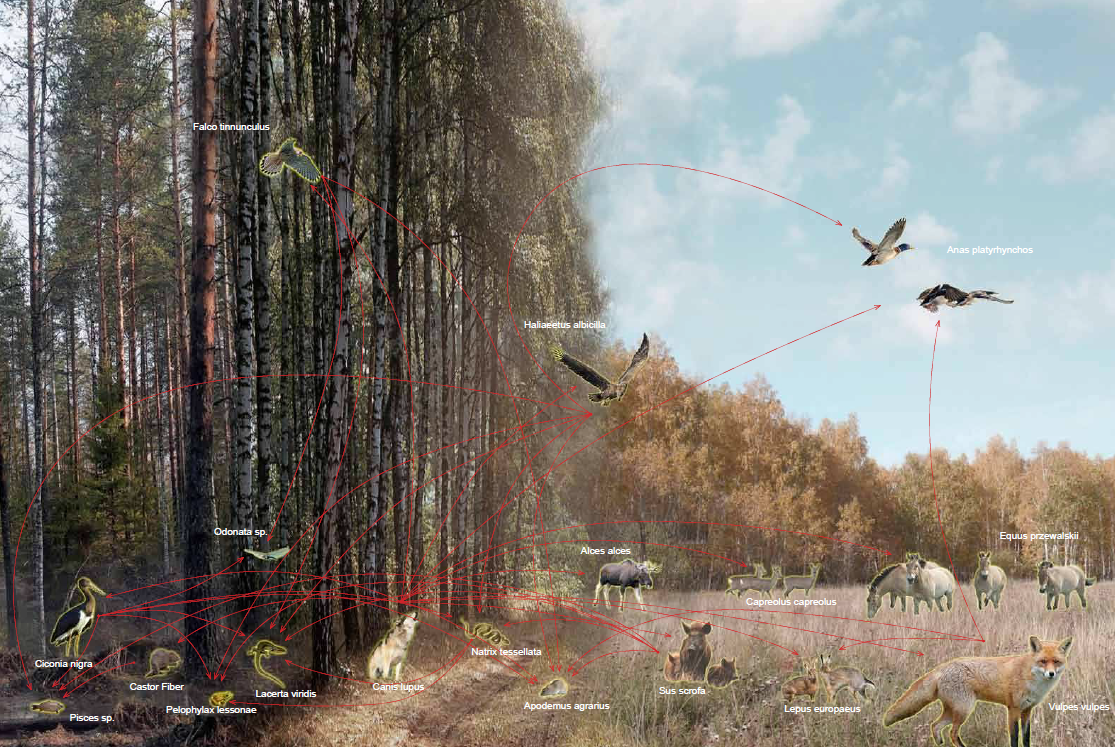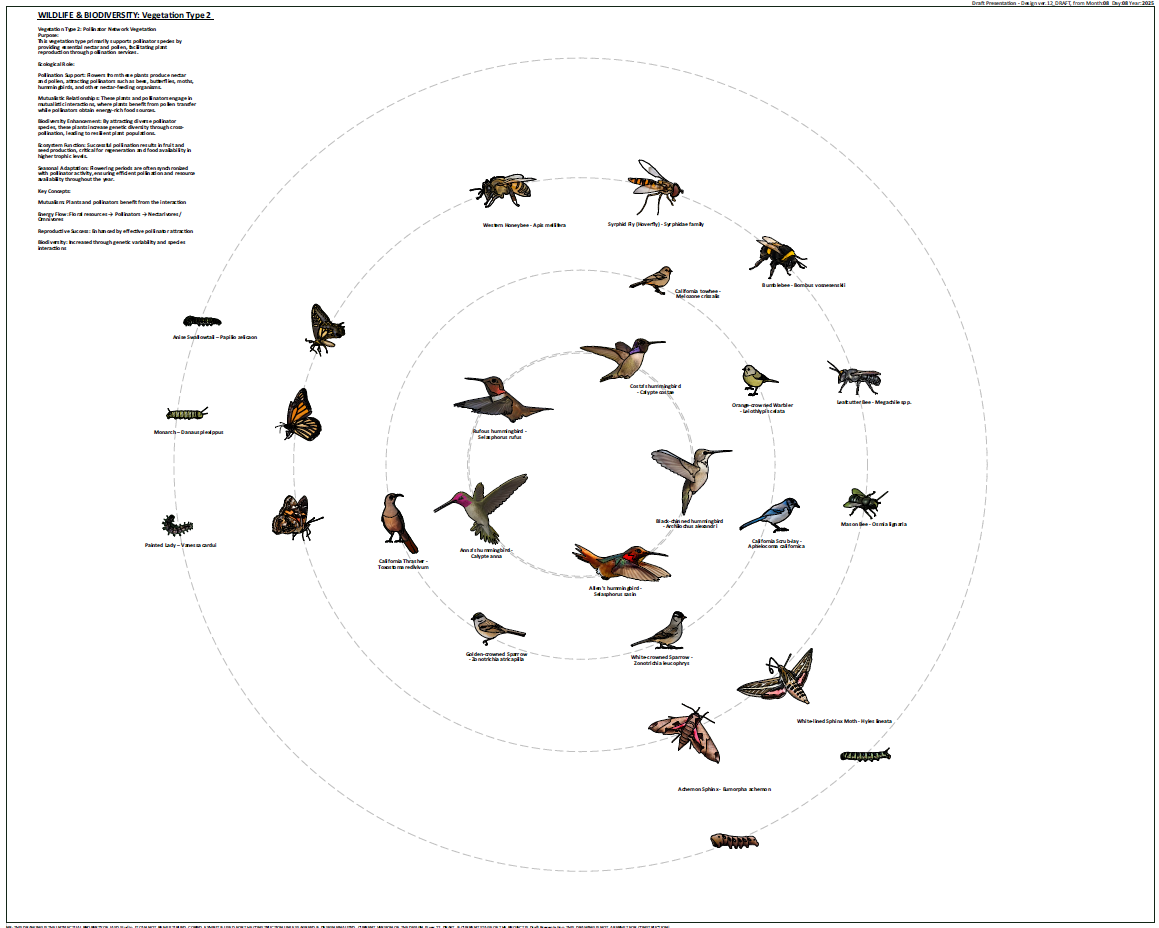- Landscape Restoration & Regional Landscape Design -
LASD Studio plans and designs ecological restoration at site and regional scales—watersheds, green corridors, and fire-safe interfaces—integrating biodiversity, hydrology, and cultural context. We work across Southern California and Northern Spain to restore ecosystems, balance water, and build long-term climate resilience.
Ecological Design for Public and Regional Futures
LASD Studio leads ecological restoration and regional landscape design projects across Southern California and Northern Spain, from watersheds and coastal dunes to urban green corridors and fire-safe interfaces.
We integrate biodiversity, hydrology, soil regeneration, and cultural memory into landscapes that evolve through time — balancing water, restoring habitats, and strengthening climate resilience. We see landscapes not as static designs, but as evolving ecosystems. Our ecological restoration and regional projects weave together science, art, and community — repairing damaged environments and creating landscapes that thrive with life.
Landscapes That Live, Adapt, and Evolve
Beyond planting, we rebuild the living system itself.
Our work restores soil health, attracts pollinators, and supports predator species through layered eco-trophic systems: microbes → flora → insects → birds → mammals - It all begins with Landscape.
Each design regenerates biodiversity, restores ecological balance, and creates long-term resilience to fire, drought, and climate change.
Designing for Municipalities, Agencies, and Communities
Science, policy, and beauty aligned.
We collaborate with city councils, counties, developers, NGOs, and cultural institutions to transform degraded or vulnerable lands into productive ecological systems.
Our BIM-based workflow ensures quantifiable outcomes — from water retention and carbon storage to biodiversity indexes and public wellbeing metrics.
Each project becomes a visible symbol of civic leadership and a living classroom for community education.
Our Approach: Evolutionary Landscape Systems
Where design intelligence meets ecology.
At LASD Studio, landscapes are not static compositions — they are open systems that evolve through interaction, succession, and time.
We apply the principles of Designing Landscapes as Evolutionary Intelligent Systems to every restoration project:
1. Memory & Continuity — We read the landscape’s past to guide its future.
2. Systemic Integration — Hydrology, soil, culture, and life form one web.
3. Creative Emergence — Design creates conditions for new life to arise.
4. Adaptive Resilience — Each project adapts to disturbance and change.
5. Open Morphogenesis — Form is never final; landscapes continue to evolve.
Landscape Restoration & Regional Design Services
1. Site Analysis
Thorough pre-design research including ecological surveys, mapping of hydrology, soils, and vegetation, cultural context studies, and stakeholder analysis.
2. Site Evaluation
Assessment of ecological, social, and economic processes — from biodiversity and wildlife corridors to cultural heritage and community use.
3. Conceptual Development Program
A vision framework for restoration and regional growth that balances ecology, culture, and human needs.
4. Restoration & Design Strategies
Clear strategies with defined goals, timelines, and measurable ecological and social outcomes.
5. Project Design Development
Detailed design documentation per specific project.
6. Cost Evaluation & Budgeting
Comprehensive construction cost analysis and budgeting for phased implementation.
7. Community Engagement & Presentation
Public presentations and dialogues with local communities to integrate feedback and ensure lasting social value.
8. Permitting & Coordination
Preparation of regulatory documents and coordination with local and regional authorities.
9. Tender & Procurement
Complete design packages for competitive bidding and transparent contractor selection.
10. Project Management & Oversight
Supervision during implementation to ensure ecological, technical, and design integrity throughout construction and beyond.
Every restoration and regional design project is more than a plan — it is a living framework that heals landscapes, supports biodiversity, and creates resilient futures for communities.
Why Public Clients Choose LASD Studio
Measurable resilience. Lasting legacy.
Ecological intelligence: Designs built on trophic-layer logic and biodiversity modeling.
BIM precision: MAWA/ETWU, stormwater, and fire-resilience calculations integrated into every plan.
Academic foundation: Decades of research translated into actionable, buildable design.
Cross-continental expertise: Projects across California and Spain connecting global and local resilience.
LASD Studio designs landscapes that evolve — living infrastructures that restore ecosystems, strengthen communities, and create measurable impact for generations.















